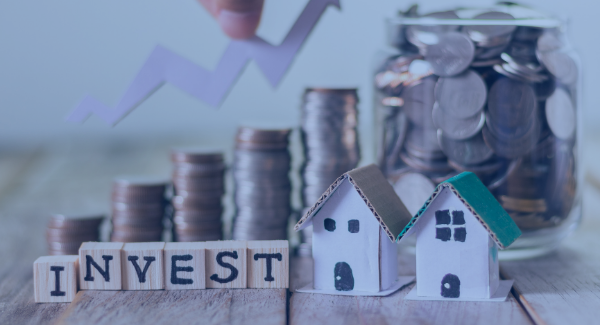THE SEARCH FOR YIELD – What are my investment options?
If you think investing is a daunting and confusing thing to get your head around, you are not alone as search for decent fixed-income investments has intensified since the onset of COVID-19. This is because the crisis has prompted the lowest government bond and term deposit yields in history. It's a timely reminder that any investment can have its price drop suddenly when panic-stricken buyers and liquidity disappear.
Before diving into your options when it comes to investment, let’s get some definitions straight.
What does yield mean?
In basic terms, yield is the income returned on an investment. It tells investors how much income they will earn each year relative to the market value or initial cost of their investment.
What are private debt investments?
Private debt is where you invest in a secured loan between a borrower and a non-bank lender. This in turn affiliates or syndicates the loan to outside investors. Private debt investments have become increasingly popular in the past few years as yields have declined.
Mortgages
Mortgages are an example of a private debt investment. 2019 saw the mortgage loan sector grow nearly 200% according to market researcher SQM. The main reason for the surge in popularity is investors can earn yields varying between 6-10% per annum on loans with a typical term of 6 to 24 months. The loans also have no direct correlation to shares because they aren’t traded on a market, which means their value doesn’t fluctuate on a day to day basis.
Private Debt Investment: Are you comfortable with risk?
No investment is risk-free. Making sure you’re comfortable with the risks involved is critical for any investor. The provider of the loan (and the borrower) should be inspected with extensive due diligence conducted. If a loan goes into default, investors can suffer losses, but if you choose wisely, private debt can be the hidden gem of your portfolio. Choosing wisely becomes easier when you lean on the expertise of your small business accountant.
This asset class has flourished recently because small commercial lenders have seized on major banks all but walking away from mid-market loans ranging from $3 million to $20 million. This came about after banking regulator, the Australian Prudential Regulation Authority, amended its prudential guidance to the big banks to make sure the Australian banking system is among the strongest in the world. One of the consequences of those changes is that it became unprofitable for the banks to dedicate much of their precious capital to lending to small property developers, which has become the bread and butter of the private loan market.
Wary investors might ask why would borrowers pay such high interest rates – up to 11 per cent – at a time when you can take out a mortgage to buy a house for less than 3 per cent? There are a couple of different reasons for this.
- The risks are very different in lending on a property development project compared to buying a residential property to live in – (For example construction risks and the pressure of selling the finished product)
- The banks are not competing in the space and the borrowers need to get financing from alternative sources.
- It’s a lender’s market.
- The possibility of a fall in property prices. The first thing to remember with these deals is that you’re effectively in the shoes of the bank, so you have no exposure to the equity side of the property transaction. The most one can make is the agreed interest on the loan. Likewise, the borrower might make no profit at all or even lose money. In that case, the security one has on the loan becomes critical.
Is my loan secure?
There are two elements to every loan’s security.
- Most loans are secured by a first mortgage over the property together with any improvements, and many will also include a personal guarantee from the developer.
- The loan to valuation ratio (LVR) determines your margin of safety. If a finished development is valued at $2 million and the loan is for $1 million, then the LVR is 50%. It means if the borrower defaults and the lender is forced to sell the property, it can be sold for half its estimated market value and the lenders will still get their money back (this may also help save on legal fees).
How do you access the private loans market?
There are again two parts to this answer.
- First, if you qualify as a wholesale investor (gross income of more than $250,000 for the last 2 years or more than $2.5 million of net assets) there are many more opportunities available to you through boutiques or larger lenders.
- Secondly, you can invest in a pooled mortgage fund or individual loans. Some investors prefer a fund structure, other like selecting the individual deals.
As with all portfolio decisions, diversification is an important way to mitigate risk. Private loans can be an attractive option, but you must make sure you’re aware of the risks involved.
Investing can be confusing, but with the right help it doesn’t have to be.
For more information on private debt investments, mortgage funds or anything in between, please contact Trent Doughty or Kim Lim at info@kellypartnerswealth.com.au or (02) 9923 0800.
Source: AFR
DISCLAIMER
Kelly Partners Private Wealth (Wholesale) Pty Ltd is a corporate authorised representative of Kelly Partners Private Wealth Pty ltd (AFSL: 516704, ABN 14 629 559 860). Any general advice provided has been prepared without taking into account your objectives, financial situation or needs. Before acting on the advice, you should consider the appropriateness of the advice with regard to your objectives, financial situation and needs.
Kelly Partners Private Wealth Sydney Pty Ltd is a corporate authorised representative of Madison Financial Group Pty Ltd (AFSL: 246679, ABN: 36 002 459 001)
Share this
You May Also Like
These Related Stories

History of Alternative Investments

Introducing Kelly+Partners BlueCore Model Portfolios

/Brand/Logos/Kelly%20Partners%20Accountants%20Logo/Kelly-Partners-Accountants-Horizontal-Logo.webp?width=1500&height=212&name=Kelly-Partners-Accountants-Horizontal-Logo.webp)
%201.webp?width=1920&height=809&name=James%20Howard%20Building%201%20(1)%201.webp)






